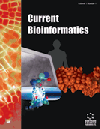-
s MSIT: Malonylation Sites Identification Tree
- Source: Current Bioinformatics, Volume 15, Issue 1, Jan 2020, p. 59 - 67
-
- 01 Jan 2020
Abstract
Aims: Post-Translational Modifications (PTMs), which include more than 450 types, can be regarded as the fundamental cellular regulation. Background: Recently, experiments demonstrated that the lysine malonylation modification is a significant process in several organisms and cells. Meanwhile, malonylation plays an important role in the regulation of protein subcellular localization, stability, translocation to lipid rafts and many other protein functions. Objective: Identification of malonylation will contribute to understanding the molecular mechanism in the field of biology. Nevertheless, several existing experimental approaches, which can hardly meet the need of the high speed data generation, are expensive and time-consuming. Moreover, some machine learning methods can hardly meet the high-accuracy need in this issue. Methods: In this study, we proposed a method, named MSIT that means malonylation sites identification tree, utilized the amino acid residues and profile information to identify the lysine malonylation sites with the tree structural neural network in the peptides sequence level. Results: The proposed algorithm can get 0.8699 of F1 score and 89.34% in true positive ratio in E. coli. MSIT outperformed existing malonylation site identification methods and features on different species datasets. Conclusion: Based on these measures, it can be demonstrated that MSIT will be helpful in identifying candidate malonylation sites.


